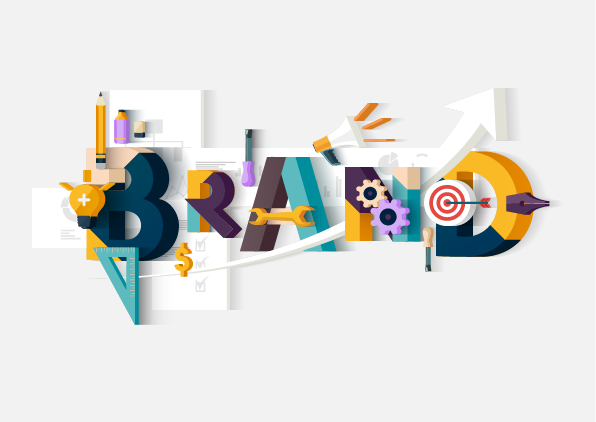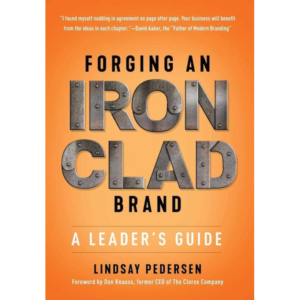 Has the rise of e-commerce sites — Amazon in particular — made brands obsolete? Some people think so. In the Digital Age, or so the theory goes, customers don’t even notice brand names. Online retailers offer endless supplies of in-stock products with plenty of user opinions to recommend them (or not). All the customer has to do is click through web pages and comparison-shop products by price, delivery time and customer reviews. No need to purchase only according to which brand has most loudly promoted itself.
Has the rise of e-commerce sites — Amazon in particular — made brands obsolete? Some people think so. In the Digital Age, or so the theory goes, customers don’t even notice brand names. Online retailers offer endless supplies of in-stock products with plenty of user opinions to recommend them (or not). All the customer has to do is click through web pages and comparison-shop products by price, delivery time and customer reviews. No need to purchase only according to which brand has most loudly promoted itself.
But this is a dubious argument at best. Amazon hasn’t introduced a new world order in which brand is irrelevant. Quite the opposite! They have simply added a new frontier to the landscape that the excellent brands out there are already skilled in traversing.
Before the Digital Age, the media and brick-and-mortar stores operated via scarcity, awarding advertising and shelf space to high-budget businesses. The Internet changed all that. Today, deep merit — not deep pockets — drives business success. No longer does a company need a huge budget for its products to compete with others on the shelf.
But here’s the thing: Human nature hasn’t changed. In a time of ever-increasing choices fighting for a foothold in our ever-decreasing attention spans, customers desperately need mental shortcuts like brand.
Here are six reasons why brand differentiation is actually more meaningful than ever:
A cluttered marketplace disperses customer attention. Brand helps one’s message break through and grab them. Brick-and-mortar stores are built on scarcity, which customers actually prefer (though they may not realize it). Studies show it’s easier for us to make decisions when we have fewer choices. So the fact that the Internet provides infinite shelf space and allows businesses to compete with every other product in the world is actually a disadvantage for customers. Brand comes to our rescue. A laser-focused brand cuts through the clutter and helps businesses earn the right to a customer’s purchase.
As helpful as customer reviews are, they still don’t displace brand. E-commerce sites like Amazon provide more access to information, including customer reviews. Yes, transparency around millions of customers’ product preferences is a new occurrence — but brand played a role in whether those customers found those products compelling, as it always has. What all these customer reviews can do is shed a light on a brand’s flaws.
For instance, when I learned from online customer reviews that Brother printers were more reliable than HP printers, I switched brands. However, I did this because of the democratization of information and reviews, not because Amazon killed the HP brand. The lesson here is for companies to pay attention and take action to solve the problems customers raise. As customers, we want the businesses in our lives to earn our trust. Amazon can’t change human nature.
Strong brands mitigate risk for customers. Good brands, like good relationships, build trust and therefore offset risk. This trust is especially important with big purchases, such as vacations or cars. When someone is investing in something expensive, there is both a high financial cost and a high emotional cost to getting the decision wrong. If people rely on strangers on the Internet to choose a hotel room for them, they put their long-awaited vacation at risk: After all, what one person looks for in a hotel may be very different from what someone else looks for.
Consider how complicated and risky it is to plan a two-week vacation to Italy, complete with airfare, hotels, food, museum fees, and car rentals. When I did this with my family, I engaged several brands beyond the review sites like TripAdvisor. I also used Lonely Planet, Rick Steves, Frommer’s and Fodor’s. These brands have skin in the game. They give a detailed and helpful review. They offer specific pointers. By relying on these trusted brands, I felt better about zeroing-in on what mattered to me.
Brand also saves time. This is an important subset of risk. Bombarded with options, many people breathe a sigh of relief to be able to choose a brand they know and trust. They don’t want to have to perform a cost-benefit calculation with every purchase they make.
People count on brand in tough economies to ensure their (scarcer) money is well spent. When money is tight, people become more risk conscious and are often willing to pay more to ensure that the money they do spend won’t be wasted. Even during recessions, branded products often outperform unbranded ones, provided that businesses have built an ironclad brand strategy prior to the economic downturn. This is a powerful example of brand mitigating risk.
Brands earn trust by repeatedly keeping big, meaningful promises, and by delivering on those promises, with the big things and the small ones. If there is no chance of repeated interactions, if the purchase is a “one-night stand” between business and customer, there is less need for a relationship, and therefore less need for a brand. But most of us do want repeat business — so we need to do everything possible to earn the customer’s trust and keep them coming back. Stand for a meaningful promise and deliver on that promise faithfully.
Brand Myth-Statements
Certain very pervasive myths spring up around brand. We must confront these myths and knock them down if we are to make decisions that unleash our competitive advantage and ultimately drive sustainable growth.
MYTH: Brand is only a business’s name or a logo.
TRUTH: Name and logo are merely expressions of brand. The name identifies the brand with words while the logo does so with image and color; they are the most visible and concrete expressions of brand but they are not brand in its entirety.
MYTH: Brand is only advertising.
TRUTH: Advertising is a tactic to express brand. Since advertising is shouting a business’s message and what it stands for, advertising is, quite literally, an expression of brand — but advertising alone is not brand.
MYTH: Brand is only for businesses with large media budgets.
TRUTH: Marketing budget and brand strategy have little to do with one another. Brand can help a business attain earned media through PR outreach, which is typically free or inexpensive because successful PR requires a compelling story — in other words, a compelling brand idea.
MYTH: Brand is irrelevant for businesses that use performance marketing tactics.
TRUTH: Brand strengthens all marketing tactics, including performance marketing tactics. When brand informs performance marketing, these tactics can not only amass clicks and sales in the near term but can accrue brand affinity and enduring growth in the long term.
MYTH: Brand is spin.
TRUTH: Brand prevents the need for spin. An ironclad brand doesn’t have to use spin because it finds the intersection between what truly serves the customer and what truly serves the business, and then transparently communicates and builds toward that.
MYTH: Brand is only for B2C companies, not B2B companies.
TRUTH: Brand is for businesses that have relationships with human beings, whether B2B or B2C. Both B2C and B2B serve human beings, so brand is relevant to both. Whether buying as a representative of a household or of a corporation, a human being is in a relationship with the other business in the transaction, and brand facilitates and reinforces that relationship.
MYTH: Brand is not for “product companies.”
TRUTH: Brand and product work together, not separately. While product is vitally important, it is the means, not the end. Customers don’t care about one’s neat-o product; they care about what they get as a result of that product — what’s in it for them. Businesses should care most about that, too. Building an ironclad brand strategy puts what customers care about into sharp relief for everyone.
 Lindsay Pedersen is the author of Forging an Ironclad Brand: A Leader’s Guide. She is a brand strategist, board advisor, coach, speaker and teacher known for her scientific, growth-oriented approach to brand building. She developed the Ironclad Method for value-creating brands while working with billiondollar businesses like Starbucks, Clorox, Zulily, T-Mobile and IMDb, as well as many burgeoning startups.
Lindsay Pedersen is the author of Forging an Ironclad Brand: A Leader’s Guide. She is a brand strategist, board advisor, coach, speaker and teacher known for her scientific, growth-oriented approach to brand building. She developed the Ironclad Method for value-creating brands while working with billiondollar businesses like Starbucks, Clorox, Zulily, T-Mobile and IMDb, as well as many burgeoning startups.
















